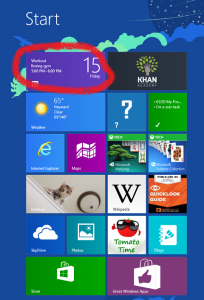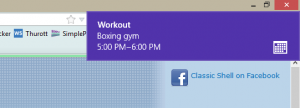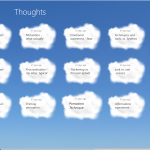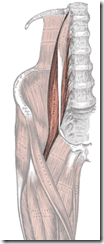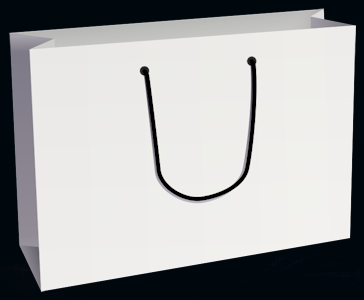
No! No! No! Don’t make me!
A little sanctimony goes a long way.
It’s been a good day, unmarred by madness or bad drivers or the usual range of human stupidity. For the last three weeks, I’ve been compacted, convulsed by coughing spasms, my mind shrunken by extended confinement to beds, tiny apartment rooms, and endless episodes of Angel. But now I’m free, and I’m flowing with the universe. I’m expanded, and my mind runs freely like a river after a session of restorative yoga poses. I’ve made some progress on my novel, finally, and I have a vision for what happens next. I can finally see the end of this project which I began last April. I’ve had a little fun socialization with one of my writing groups.
In short, I’m the very definition of contentedness, gratitude and harmony. I’m actually—gasp—happy! I’ve found Nirvana. Now I just need yogurt and to pick up cashew butter for my husband and the elixir of life for the two of us: Sprouts’ organic Sumatran blend.
What can go wrong? For the first time in a long time, I don’t actually ask myself the question. Nothing can go wrong. All is right with the universe, and there is eternal peace within. My inner self is mirror to the harmony without.
I head for the bakery section. Sprouts doesn’t have my heavenly sprouted wheat apple cinnamon bagels. Instead, I settle for honey sprouted wheat. Well, most of them taste okay except the blueberry. Whatever. My inner Zen returns. They have the pretzel-hummus snack packs again! I stock up. The yogurt selection’s pretty sad, though. I have a week’s worth in the fridge. No problem. I snag a couple of half-hidden jars of cashew butter—they’ve gotten smaller. Whatever. I fill up a bag with Sumatran beans and inhale the heavenly scent. Aaah! Life is wonderful.
The checkout line is long, so I browse the check-stand magazines. Ooo, a magazine with a brain on the cover! Hey, it talks about creativity! I slide it into my basket and join the masses. The lines split and re-connect as new registers open. I flow with them. I muse about my novel as the line I’m in grinds to a halt. Who cares? Life is grand!
A small family gathers its bags at the end of the register. The cashier runs the next set of items over the scanner for the couple just ahead of me until something halts her flow. Why, it’s white, and looks a little like the stylized artistic brain on the over of my magazine! I stare down at my basket for a moment before beginning to unload it at the end of the conveyor belt. The universe whispers to me that I might be making the perfect purchase at the perfect time.
“Did you get cauliflower? I thought you hated it,” the woman says.
“No. Didn’t you?”
“This isn’t yours?” the cashier asks.
The man and woman both shake their heads.
“I had a cauliflower. You got me a cauliflower. I remember!” The family pauses in their grocery wrangling as the mother claims her vegetable. She grabs her purse and whips out her wallet.
A scuffle ensues as the cashier grows increasingly confused. I should pay attention. I should be mindful about what’s happening around me. I don’t care. Instead, I examine the precise placement of olives on the yummy-looking plate of pasta on the cover of a food magazine. Mmm. Olives. Too bad my husband hates them. Whatever. Like all things, this kerfuffle too will pass, and life will continue its serene flow through time and space.
And it does. Now my items are getting dragged over the scanner. The cashier looks befuddled. I pull out my wallet and start shuffling through the pile of receipts there for actual monetary units. I half-sense the long line of people behind me, so the least I can do is try to make my time in line efficient.
“Do you have a bag?”
At the beginning of the year, Alameda County outlawed plastic bags in grocery stores. If you want a paper bag, you have to pay a dime. It’s vaguely annoying, but so is most legislation. I still haven’t made the mental shift, so sometimes I just pay the dime and buy my paper bag. It gets promptly recycled when I get home. You know, “reduce, re-use, recycle.” I lean on the third part of that probably more often than I should, but at least I adhere to part of the triad.
“No. Could I get a bag?”
She stares at me, and then those eyes widen until they’re about to fall free from their sockets. “Why don’t you have one?”
“I wasn’t thinking about it.” If I’d actually thought about anything beyond getting my mental shopping list, I’d have remembered the cloth bag in my car trunk. But I was flowing; I had story in my heart, and poetry in my soul. Who cares about bags?
“Did you plan on shopping?” There’s probably venom in her voice, but I’m a little busy trying to pull a couple of twenties out of my wallet.
“Yes.” Of course that “plan” was just thinking I was going to head to Sprouts after my writing group meeting. Bags don’t enter into planning, just wrangling with location and timing. Bags are a whole separate level of logistical pain that I can’t process unless my only plan is grocery shopping.
“You were planning on shopping, but you didn’t think of bringing a bag?”
Instead, I’m wrangling cash. I’ve found the two ones to go with my two twenties as she huffily starts stacking my groceries into an easy-to-manipulate paper bag, unlike the cloth monstrosities she usually has to wrestle with. I pull out a dime and hand her exact change as her dudgeon finally bludgeons me over the head. Wait, you’re lecturing me on proper bag use? You’re guilt-tripping me when there’s a huge line of people behind me and you’ve just screwed up the two transactions directly ahead of me?
“Exact change.”
Yes. What does that have to do with anything? She puts the money away in the register and gestures to someone else’s specials flyer left behind on the customer platform. “Do you want to take that home with you?”
“No,” I say, trying to re-center myself. I don’t bother to tell her it isn’t mine.
She snatches it off the platform and chucks it disdainfully in the trash. No bag, and she’s a litterbug to boot! I can almost feel her think.
I take my grocery bag and my suddenly too-heavy but inadequate selections. I don’t have my bagels. I don’t have good yogurt. And I’m suddenly muttering invective beneath my breath. There is no flow in the universe. Instead, it’s cold and stark and disorderly. My serenity is shattered and I notice just how horrible the other drivers are around me as I merge onto 880 North. I get cut off. I’m tailgated. Some blue light special with his douche-beams is blinding me in my driver-side mirror.
Just what I need, I tell myself out loud, some complete moron giving me a guilt trip. Want a side of sanctimony with those bagels? That’s my new mantra for the rest of the evening.
Let’s take a wok!
I probably like Target too much for my own good. My husband’s the same way. It’s well-organized, well-lit, there’s no crappy music, and no massive displays block the open aisles. It’s a weird sort of heaven that’s close to things we usually go to, and it’s open late!
We get the random items that my husband needs, and then I remember my abortive Thursday cooking attempt. You’re not supposed to improvise the way I do, but what else are you supposed to do when confronted with, “Brush barbeque sauce on chicken,” besides use a paint brush (not used, and generally clean) if you aren’t specialized enough to have the pastry variety? I remember my “hack” as we walk by the mixers. They’re cherry and cotton-candy colored. My mouth idly waters as I think of those sour-cherry ball things and carnivals.
“We need a pastry brush,” I say.
My husband stares at me.
“Remember the paint brush I ruined?” I couldn’t imagine putting it in the dishwasher, or shoving it in watercolors after I’d contaminated it with salmonella. And I sure was never going to use it on food again.
He snorts.
Target’s kitchen section is utterly insane. You’d think items would be organized by type or by color, or by something that resembles a scheme. Instead, I think they use brand as their standard. This means you have a whole wall of random thingamabobs interrupting the measuring cups. You can’t compare prices, types, or anything else without a long walk between, and lots of overwhelming gadgetry to befuddle the senses. We’re engaged in a long debate over the merits of steel vs. plastic measuring cups, or whether we should get a spoon/cup collection when I find the only pastry brush on the wall. Aside from the silicone one he finds a minute later for $5 less. Done. I settle on a set of blue plastic measuring cups. Sky blue! Pretty! Unlike the oddball black and white ones we have lying around, this one reminds me of a sunny day and is a completed set. And it’s blue! Blue! And it’s $3 cheaper than the metal cups halfway down the long aisle.
Did I mention I like blue?
He’s found the larger measuring cups. We used to have a really pretty clear blue plastic measuring cup (2 cup size), but we haven’t been able to find it for months. I liked it for two reasons: 1) you could drop it, and it wouldn’t break, and 2) it’s blue. He liked it too. We have a nostalgic conversation about just how wonderful that missing cup is. These new ones are glass aside from some weird slanty-measured plastic things that cost a mint. One claims to be Pyrex, and I remember that Pyrex isn’t supposed to shatter when you drop it. But it will hurt your foot. I know that from experience. We debate the merits of glass and shudder at the $8 pricetag on the plastic slanty-measure cup. We muse about hurt feet and dropping things. Or at least I do as my husband snickers at me.
“Excuse me?” The voice that interrupts us comes from a young and gangly man who is ridiculously well-dressed for Target or Rubio’s, where I remember seeing him staring befuddled at the menu. He’s wearing a suit that’s both somewhat stylish and somewhat expensive. He matches, which is more than I’ve ever managed in business attire. “Do you know anything about woks?”
I had a wok once. I tried to season it, and ended up smoking up my old Oakland studio, setting off the smoke alarm, and gunking its surface up with burned oil. “I had one once but I barely used it.”
He shows me a sink scrub-brush. It’s one of the ones that has space in the top to store dish soap. We once owned something like it, but it got gummed up with dried soap so badly it became useless. “Will this work to clean it?”
Maybe? I’m not really sure what to tell him. My brain starts shooting off in all directions, including my failed seasoning attempt, the times I’ve seen woks used on Yan Can Cook, and I swear that I’ve actually owned a real wok brush. I start thinking about potential problems, and as my gears start grinding, I say, “I’m not really the wok expert. I got mine and the cleaning tools at The Wok Shop in Chinatown. I just let them sell me whatever.”
Surely this disclaimer should make him back away, right? I mean, I’m talking with my husband about injuring myself with cookware, after all!
“You don’t think it will work?” His eyes beseech me, and I have to give him something.
“Well, um… I think I had a wok brush. The bristles were made out of bamboo or something. That plastic might melt.” I start thinking about how all of the plasticware in Target is made in China. I remember the melamine-infested pet foods, about horrible cancers, and how real melamine is used on shelves. Eating shelves. Not healthy, especially not on a healthy-food device like a wok. “Maybe there’s something else here that will work better.”
We start scouring the displays for something else. He puts back the scrubber. I try to remember what my wok-cleaning brush looked like. I half-remember the one on Yan Can Cook. I see nothing except—is that a brush? No, it’s an egg slicer with brushy-looking yellow plastic things on the bottom. My husband laughs at me. I laugh a little uneasily; someone’s asking me for cooking advice. The young man picks up the scrub-brush again.
“There’s more stuff here than at Nob Hill,” he says, and I manage a self-effacing laugh.
“Kind of overwhelming, isn’t it?” I pick up the plastic slanty-measure cup. “I don’t want glass.”
My husband nods as he snickers under his breath. When the young man focuses on the rack ahead, we sneak away, new cups and pastry “brush” in basket.
“That melting thing was stupid, wasn’t it?” I ask. “He’s probably just going to cool the wok down with water, right? I was just thinking that he’d make multiple things in the same wok like Yan Can Cook. But he’s probably not. Why was he asking me for help?”
“You’re a woman.” And right then, I know my husband’s right. This scares me. A lot.
“And he’s single.”
“Well, if he was attached, wouldn’t he be with his wife?” Things are so obvious to my husband. I wish I could be that realistic. “She’d be telling him what to buy.”
I spend the rest of the evening wondering what happened to my wok brush, if my memory’s actually faulty, and if my brush was really a figment of my imagination, brought on by remembering Martin Yan’s brush. My husband asks me if my wok brush memory is a fabrication. I wonder myself and torment myself for an hour as we wander around a bookstore. Did I actually own one? Or am I confusing reality with television?
“Nope,” I say as we leave the bookstore. “I ruined the brush seasoning the wok. I tossed it in the trash years ago. The brush part was all gunked up with that black oil crap. The couple of times I used the wok before we chucked it, I cleaned it out with water and a paper towel, and ruined it in the process.”
“You’re still thinking about that?”
As we drive home, I think to myself, Shopping sucks. At least I’m not thinking about woks.
![]() I love Windows 8. There, I said it; now you can throw all the potatoes you want at me. I’m sure you’ve probably read my fellow Win 8 lovers’ posts about how great all the under-the-hood changes are, how much faster it is than Windows 7, and how the Metro Modern interface isn’t the OS. I won’t bore you with that. My reason for loving it is far more prosaic: I’m finally using an online calendar and a tracking app.
I love Windows 8. There, I said it; now you can throw all the potatoes you want at me. I’m sure you’ve probably read my fellow Win 8 lovers’ posts about how great all the under-the-hood changes are, how much faster it is than Windows 7, and how the Metro Modern interface isn’t the OS. I won’t bore you with that. My reason for loving it is far more prosaic: I’m finally using an online calendar and a tracking app. To access and edit your drifting ideas:
To access and edit your drifting ideas:
